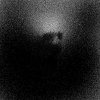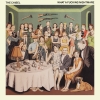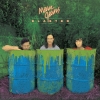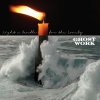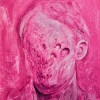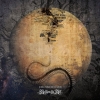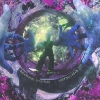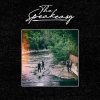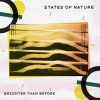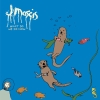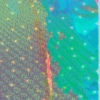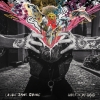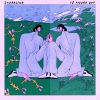Gig Reviews
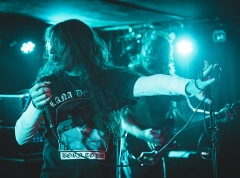
Cult Leader
Stengade, Copenhagen, DEN - 15/4
Album Reviews
Finntroll: Because Swedish Just Sounds So Damn Trollish
Previous Next
author AP & NB date 08/04/09
While Skyclad is considered by some as the earliest exponent of folk metal, it is another band that is accredited more often with having given birth to the genre. That band is Finntroll - and rightfully so. For the term was not understood to be a genre of its own before the release of "Midnattens Widunder" in 1999; traditional elements had been part of the metal movement for long, but never was there talk of building an entire concept around folklore and fantasy in the way that Finntroll did. The band's tale began in 1997, when a young man known as Teemu Raimoranta (alias Somnium - formerly of Impaled Nazarene and Thy Serpent) woke up in a rehearsal room with a punishing hangover. His friend Jan Jämsen (alias Katla) was, unbeknownst to him at the time and also under the influence of alcohol, coining the beginning of one of the most celebrated styles of music ever to have come out of Scandinavia. Liking what he heard, Somnium picked up a guitar and laid down some riffs to accompany what probably sounded like a dark take on the soundtrack of some children's cartoon. So began the series of unfortunate events that is the tale of Finntroll.
Fast-forward to 1998, an obscure demo tape titled "Rivfader" appears in the then-infant Finnish metal community. "Midnattens Widunder", the band's debut album, is the lovechild of the astounding success of that demo, which circled within the Finnish underground scene for some time before drifting into the hands of Spikefarm Records (a Spinefarm subsidiary), who were keen to offer the band a record deal provided that its two founding fathers would recruit at least session musicians for eventual live performances. And although the four new trolls who filled the ranks were originally intended as such, they remain permanent members of Finntroll to this day: Samuli "Skrymer" Ponsimaa on second guitar, Sami "Tundra" Uusitalo on bass, Henri "Trollhorn" Sorvali on keyboards and Samu "Beast Dominator" Ruotsalainen on drums.
Midnattens Widunder
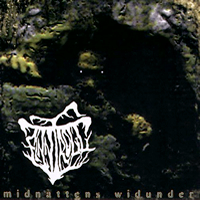 "Midnattens Widunder" was released in 1999, leaving a permanent footprint in not just the infant folk metal scene, but also the mighty domain of norse black metal, as we shall see. Perhaps most striking about it is that the guitars have been demoted from their typical leading role to playing powerchords in the vein of most black metal bands: high on treble and distortion. Although the two-minute intro and its successor, "Svartberg" carry in them the spirit of folk metal (with a particularly trollish sound, it should be said), essential to Finntroll's sound is humppa (a traditional Finnish style of polka, which has its roots in jazz and is typically characterized by a two-beats-per-bar kind of foxtrot), which does not join the party until the fantastic "Rivfader".
"Midnattens Widunder" was released in 1999, leaving a permanent footprint in not just the infant folk metal scene, but also the mighty domain of norse black metal, as we shall see. Perhaps most striking about it is that the guitars have been demoted from their typical leading role to playing powerchords in the vein of most black metal bands: high on treble and distortion. Although the two-minute intro and its successor, "Svartberg" carry in them the spirit of folk metal (with a particularly trollish sound, it should be said), essential to Finntroll's sound is humppa (a traditional Finnish style of polka, which has its roots in jazz and is typically characterized by a two-beats-per-bar kind of foxtrot), which does not join the party until the fantastic "Rivfader".
Indeed, compared to the band's later work, "Midnattens Widunder" is still very resident in the black metal genre with its emphasis on guitar scales, intervals and chord progressions which produce the most dissonant, fearful and ominous sounds. What differentiates the album from the host of (mostly Norwegian) black metal bands is what earned the band the folk metal crown in the first place: the endless repertoire of classical instrumentation delivered by Trollhorn to create a pagan (or you might say 'folky' for lack of a better word) sound that makes the listener feel like he is immersed in some kind of parable. Perhaps the best way to describe "Midnattens Widunder" is to liken it to an adult tossing about in a sandbox. Except instead of giggling, it screams and growls like a prehistoric caveman.
Indeed, were it not for Katla's deranged vocals (think Shagrath of Dimmu Borgir) during which Trollhorn tends to settle down and play ambient choir sounds, the silliness of the rest of the album would probably make it capsize in a sea called utterly ridiculous. But that it is so playful and frivolous at heart is what makes it so likable in the first place. Take "Bastuvisan" for example: much of the track is but a recording of several people sitting in a Sauna, swatting each other with vitsas (fresh birch branches tied together with the leaves intact) - then, halfway through, Trollhorn lays down some humppa and the song explodes into the fastest, shortest and arguably the most extreme track on the album. "Blodnat" is similarly eclectic, beginning and ending in sheer mayhem with short sections of buoyant flute scattered in between for jest.
"Segersäng" and "Svampfest" then round off the album by sweeping most of the black metal connotations aside and probably setting the stage for Finntroll's albums to come with two pure folk metal tracks that make it abundantly clear just how influential this band is in the genre: the former an even more accelerated feat of humppa (though overall not as fast) than "Bastuvisan", the latter a fantastical instrumental track faithful to its title (mushroom, or perhaps more appropriately, shroomfest).
Jaktens Tid & Visor om Slutet
Although "Midnattens Widunder" earned Finntroll moderate success, the band dedicated much of the following year to writing and rehearsing new songs, only taking time off for a brief tour across Finland and a foreign debut at the Party San Open Air festival in Germany. In 2001 Finntroll released its sophomore album, "Jaktens Tid", to rave reviews. The album featured the same black metal influences as the debut and further developed the humppa style of metal which makes the band's music unique. It also features the joik singing of Jonne Järvelä from what is now Korpiklaani. The success of this release led Spikefarm to finally launch the band into an extensive touring cycle, which soon began having a profound impact on Katla's vocal cords. His loss of voice lead to the cancelation of numerous live performances, including a full tour, and despite undergoing surgical and medical treatment, it was becoming obvious that Katla would never sing again. He surrendered his duties to Tapio Wilska and as a farewell, guested on the album "Visor om Slutet" - an experimental acoustic piece recorded at a forest cottage in 2003. AP
Nattfödd
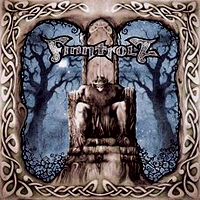 Weeks later another, tragic blow lead Finntroll onto the verge of demise when Somnium, under the influence of alcohol, fell to his death from a bridge in Helsinki (though some have suggested that the plunge was suicidal), eliminating the only remaining founding member. Inches from splitting up, Finntroll decided to continue what was beginning to look like an uphill battle and recruited Mikael Karlbom (alias Routa), a long-time friend and trustee of the band to continue Somnium's legacy. Later that year, following a successful tour in support of Katatonia, Finntroll emerged once again, hungry for retribution, to record a new album, "Nattfödd", as well as an accompanying EP, "Trollhammaren", which together brought the band sold-out European/North American tours and countless slots at festivals worldwide.
Weeks later another, tragic blow lead Finntroll onto the verge of demise when Somnium, under the influence of alcohol, fell to his death from a bridge in Helsinki (though some have suggested that the plunge was suicidal), eliminating the only remaining founding member. Inches from splitting up, Finntroll decided to continue what was beginning to look like an uphill battle and recruited Mikael Karlbom (alias Routa), a long-time friend and trustee of the band to continue Somnium's legacy. Later that year, following a successful tour in support of Katatonia, Finntroll emerged once again, hungry for retribution, to record a new album, "Nattfödd", as well as an accompanying EP, "Trollhammaren", which together brought the band sold-out European/North American tours and countless slots at festivals worldwide.
As with the other albums, an ambient intro leads into a black metal frenzy, but now the band can't even wait until the end of the first track to bound into their jovial humppa. The minor chords accompanying the up-tempo groove of "Människopesten" quickly disperse leaving a cheerful party-tune. The good mood of the music keeps rising with the strangely Hebrew sound of "Eliytres" and the more sombre verse of "Fiskarens Fiende" giving way to yet another celebratory chorus. This theme peaks with "Trollhammaren", a song ostensibly about a troll slaying Christians with a mighty hammer, which in reality is unashamedly happy from the start. I challenge anyone to resist the urge to sing along to the chorus (even if they don't know any Swedish).
You do get brief breaks from the humppa: in the middle of "Nattfödd" (Nightborn) there's a grandiose, but folky, intermezzo; then there's a section of ambient noise that makes up most of "Marknadvisan" before another frantic clash of sounds (a throwback to "Bastuvisan" from the debut album) and there's the black metal intro to "Det Iskalla Trollblodet" with pinch harmonics casually inserted to form a satisfying bridge into the inevitable upbeat chorus. If you add up these sections of non-humppa music on the album at this point you end up with a very short list indeed, and, as if sensing this, Tundra and Trollhorn wrote two very different tracks to end the album. "Grottans Barn" sounds like any other of Fintroll's songs but played at half the speed and, in stark contrast with the rest of the album, "Rök" is a subtle and melancholic acoustic-guitar harmony accompanied by a quiet rumble of thunder: an unspoken farewell to Somnium perhaps.
Ur Jordens Djup
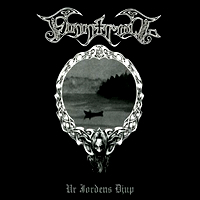 In the beginning of 2006 the band felt it should begin composing new material once again, and in light of personal, publicly indisclosed reasons, it was decided that the band would do so without Wilska. A frenetic hunt for a new vocalist quickly found Mathias "Vreth" Lillmåns, whose furious voice was immediately native to Finntroll's esteemed sound. Then, the band's line-up completed, the recording of "Ur Jordens Djup" commenced in the Sonic Pump studios in Helsinki - an album, which recalls a memorable piece of advice.
In the beginning of 2006 the band felt it should begin composing new material once again, and in light of personal, publicly indisclosed reasons, it was decided that the band would do so without Wilska. A frenetic hunt for a new vocalist quickly found Mathias "Vreth" Lillmåns, whose furious voice was immediately native to Finntroll's esteemed sound. Then, the band's line-up completed, the recording of "Ur Jordens Djup" commenced in the Sonic Pump studios in Helsinki - an album, which recalls a memorable piece of advice.
I once sat in on a lecture at my friend's music college. It was about how to make your demo EP appealing to a record label. The lecturer said that you must start with a bang: don't have a long intro track as it makes a boring first impression. I don't know how much bands in the folk-metal scene care about their market appeal but the three minute eighteen intro to Finntroll's "Rivfader" demo using only two notes was probably a mistake. Now on their fifth album, which touches on the mythology introduced in that demo, the band has come full circle and I'd say the length of the intro to Ur Jordens Djup is still about as brave as they come. However, this time around it's also about as good as they come.
The first track, "Gryning" (Dawn) consists of three and a half minutes of ambient forest noises and fantastical, orchestral build-up. It slips from subtle sections of bells, woodwind and strings - which provoke a feeling of mystery, magic and intrigue - to an unstoppably powerful march of deep brass, strings and timpani drums. During these sections the listener is tricked by the incredible building suspense only to hear the music lapse back into the quieter melody once again. Finally the tension is broken by the frantic, syncopated drumming of "Sång"(Song) and the real Finntroll is unleashed once again.
Two years after the success of Nattfödd, the band has replaced Wilska with Mathias "Vreth" Lillmåns and his harsher vocal sound perfectly accompanies the subtle change in mood for Finntroll's music. The same lyrical themes from the previous album (although now written by Katla once again) have had life brought to them by a far more fitting soundtrack. Whilst the upbeat humppa style is still present, the songs have a generally broader, deeper, more mature sound with some darker sections seeming to add an extra element of storytelling to the varied journey on which the album takes the listener. It is entitled "From the Depths of the Earth".
Despite this, nestled in this mixture of darker music, straight after "Slagbröder", which is one of the more mainstream of the tracks on this album (its vocals reminiscent of Ensiferum), is a reminder of what Finntroll have always excelled at. "En Mäktig Här" is, from its very first notes, the most light-hearted metal track I have ever heard (followed closely by "Maktens Spira"). It starts with what sounds like a kazoo, steel drums, a güiro and some trollish muttering, mumbling and laughter. Then comes some sort of medieval feast combined with the guitar harmonics and screaming finally climaxing in what I can only describe as self-consciously ridiculous melodies. This is Finntroll at its best... so far. NB
 Twitter
Twitter Facebook
Facebook